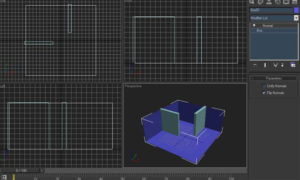In Cinema 4D, Thinking Particles (TP) is a powerful particle system, and Arnold Renderer is a robust render engine. While Arnold doesn’t directly support Thinking Particles natively, you can use the TP data to drive certain aspects of Arnold shaders through expressions or Xpresso. Here’s a general guide on how you might approach this:
Step-by-Step Guide:
1. Setup Your Thinking Particles System:
- Create a Thinking Particles system in Cinema 4D and set up the particle emission as needed.
2. Attribute Data in Thinking Particles:
- Use the TP system to generate data that you want to use to control aspects of the Arnold shader. For example, you might use particle age, position, or custom TP data channels.
3. Create Arnold Material:
- Create an Arnold material for your object. In the Arnold Shader Network, you’ll be using nodes to control different aspects of your material.
4. Use TP Data in Xpresso or Expressions:
- Set up Xpresso or use Expressions to link the TP data to parameters in your Arnold material. This might involve using nodes like “Xpresso Iterator” or the “Xpresso Data Node” to fetch TP data.
5. Link TP Data to Shader Properties:
- Connect the TP data to the appropriate properties of the Arnold shader. For example, you could use TP data to drive color changes, displacement, or any other shader property.
6. Test and Refine:
- Run a test render to see how the Arnold material responds to the TP data. Adjust the Xpresso or Expressions setup as needed for your desired effect.
Example – Using TP Age to Control Color:
Here’s a simplified example where TP particle age controls the color of an Arnold shader:
- Thinking Particles Setup:
- Emit particles with a PPass node and set up an Age data channel.
- Arnold Material Setup:
- Create an Arnold material.
- Add an AI Ramp node to control color.
- Xpresso Setup:
- Use Xpresso to fetch TP Age data.
- Map the Age data to the position on the AI Ramp.
- Connect Xpresso to Shader:
- Connect the Xpresso output to the Diffuse Color input of the Arnold shader.
- Render:
- Run a test render to see how the color changes based on particle age.
This is a simplified example, and your actual setup will depend on what you want to achieve with TP and Arnold. You can use a similar approach to control various other shader properties or even create more complex effects depending on the data generated by Thinking Particles.




